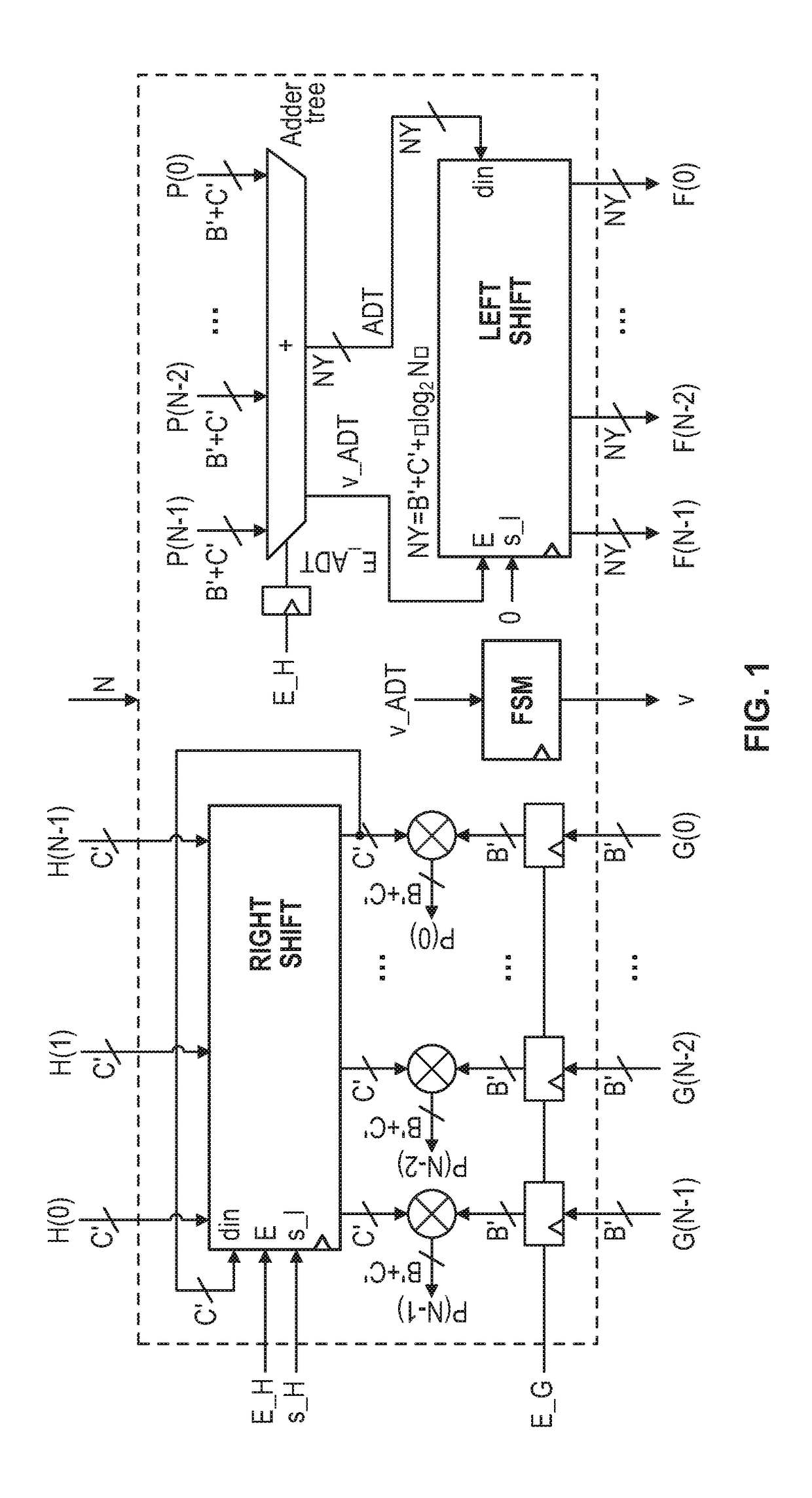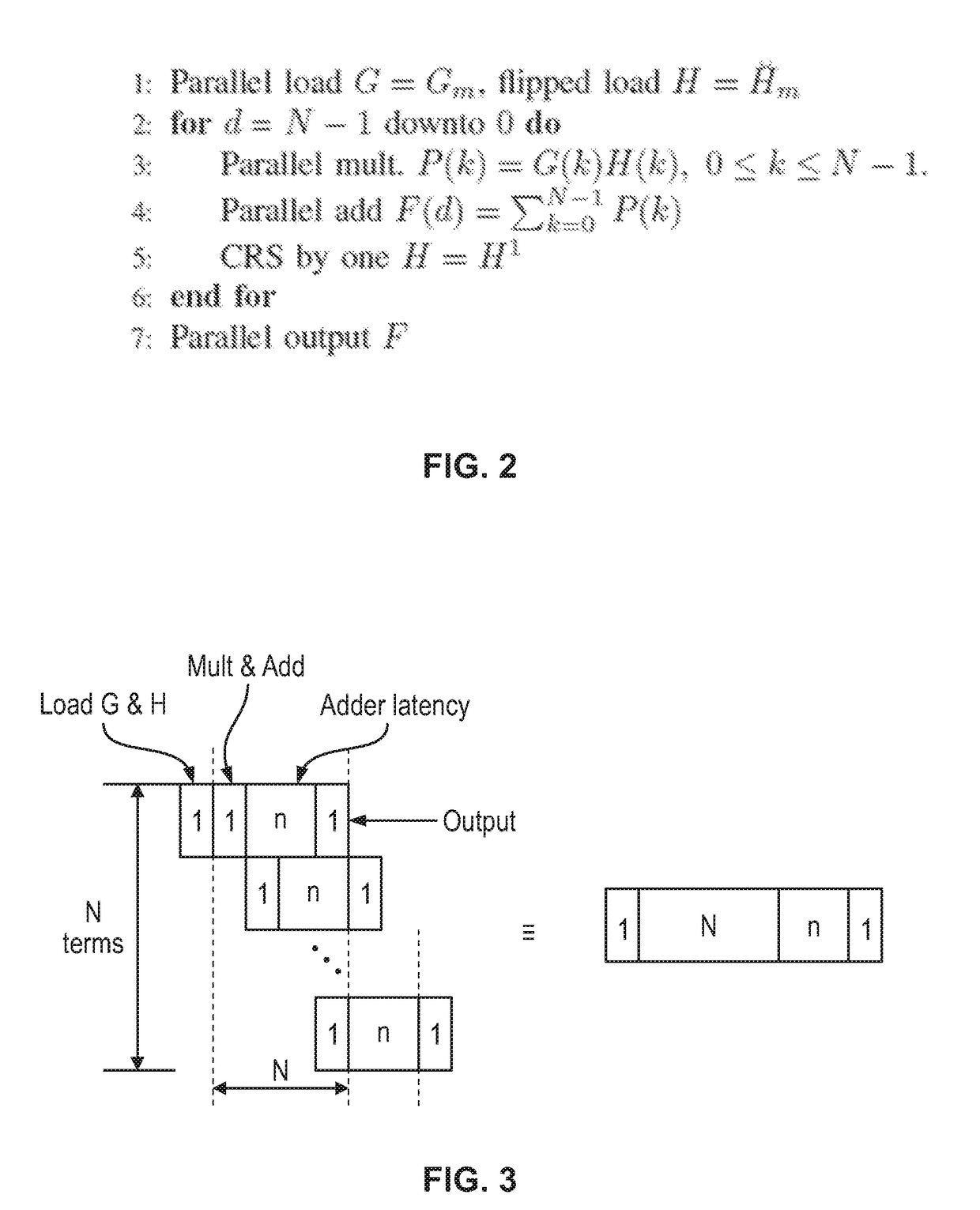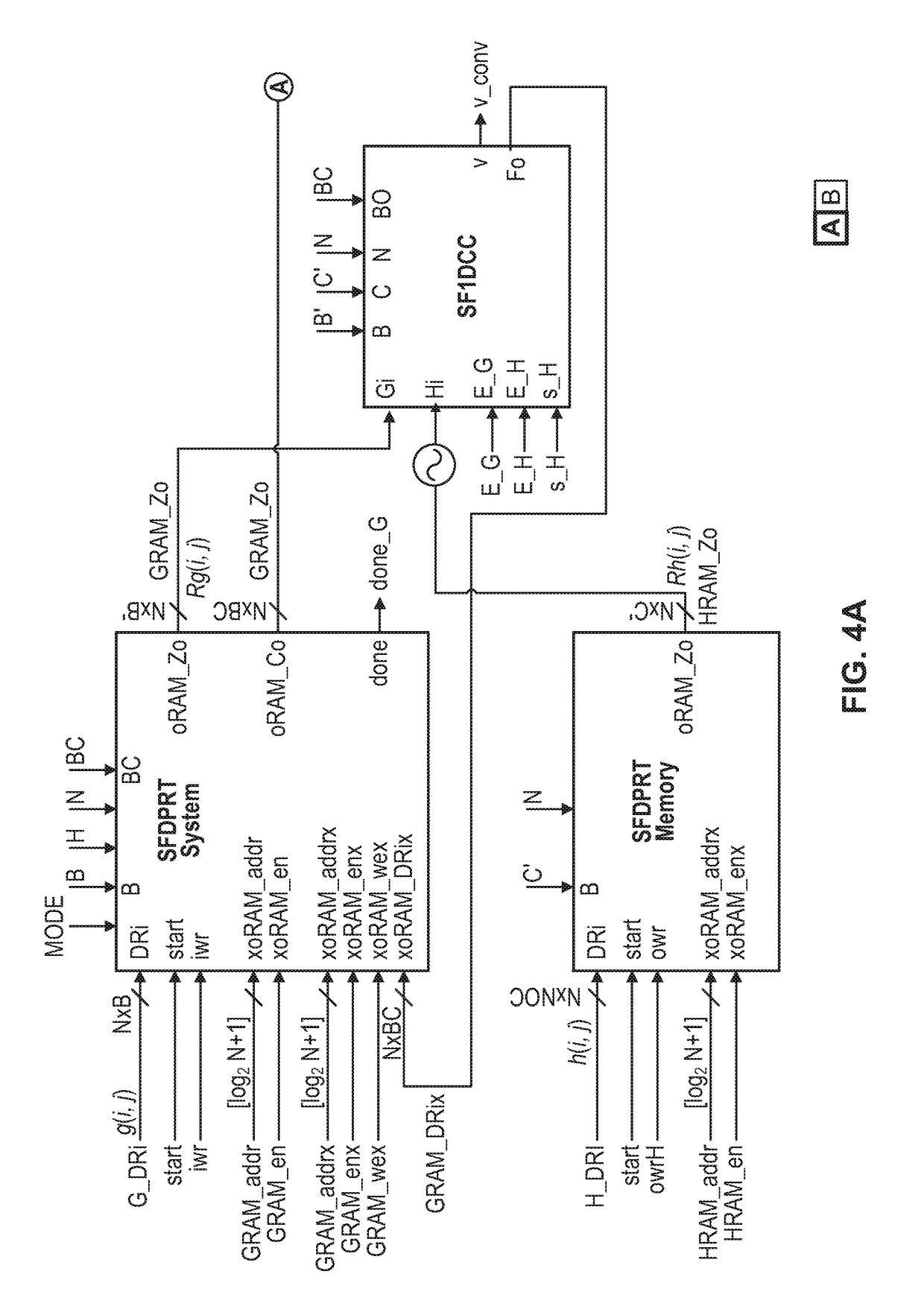System and methods for computing 2-d convolutions and cross-correlations
a technology of cross-correlation and system and method, applied in the field of image and video processing, can solve the problems of fundamental limitations in the hardware scalability of using 2-d ffts, the use of complex 2-d ffts hardware, and the use of ideal arithmetic units, etc., to achieve fast performance, low non-recurring engineering costs, and performance scalability
- Summary
- Abstract
- Description
- Claims
- Application Information
AI Technical Summary
Benefits of technology
Problems solved by technology
Method used
Image
Examples
Embodiment Construction
[0051]The invention is directed to fast and scalable architectures and methods adaptable to available resources; that (1) compute 2-D convolutions using 1-D convolutions, (2) provide fast transposition and accumulation of results for computing fast cross-correlations or 2-D convolutions; (3) provide parallel computations using pipelined 1-D convolvers. Additionally, fast and scalable architectures and methods compute 2-D linear convolutions using a Discrete Periodic Radon Transforms (DPRTs) including the use of scalable DPRT, Fast DPRT, and fast 1-D convolutions.
[0052]The invention provides the following basic notation. Let g(i,j) denote an image of P1 rows with P2 pixels per row be of size P1×P2 with B bits per pixel. The image g(i,j) is indexed using 0≤i≤P1−1 and 0≤j≤P2−1. For the convolution kernels, the symbol h is used and assume a size of Q1×Q2 with C bits per pixel. f(i,j) is used for the output, with N1×N2 where N1=P1+Q1−1 and N2=P2+Q2−1. As described herein, N is simply use...
PUM
 Login to View More
Login to View More Abstract
Description
Claims
Application Information
 Login to View More
Login to View More - R&D
- Intellectual Property
- Life Sciences
- Materials
- Tech Scout
- Unparalleled Data Quality
- Higher Quality Content
- 60% Fewer Hallucinations
Browse by: Latest US Patents, China's latest patents, Technical Efficacy Thesaurus, Application Domain, Technology Topic, Popular Technical Reports.
© 2025 PatSnap. All rights reserved.Legal|Privacy policy|Modern Slavery Act Transparency Statement|Sitemap|About US| Contact US: help@patsnap.com



